Latest Blogs
Understanding Testicular Torsion: Symptoms, Treatment and Diagnosis
Introduction Testicular torsion is a condition that could be more serious than you think. Ignoring these risks can result in the loss of the affected testicle. This blog will help you identify the symptoms of testicular torsion and stress on the requirement of prompt medical attention. Understanding these signs can make the difference between maintaining your reproductive health and the need for testicular torsion surgery. Keep reading to find out more. What Is Testicular Torsion? Testicular torsion occurs when one of the testicles rotates, twisting the spermatic cord, which supplies blood to the testicle. This sudden twisting cuts off blood flow to the testicle, causing a severe pain and swelling. Tis lack of blood flow can cause a tissue damage and even loss of a testicle. What Are The Symptoms Of Testicular Torsion? Given below are common testicular torsion symptoms: You may experience abrupt and intense pain in your groin or lower abdomen during testicular torsion, often without any apparent cause or injury. Your scrotum swelling may occur, and you may notice an increased tenderness or sensitivity in the affected area. Testicular torsion affected testicle may appear higher than normal or be positioned at an abnormal angle. The scrotum skin may become red or inflamed, indicating a possible tissue damage due to testicular torsion. Some people may also experience testicular torsion symptoms such as nausea or vomiting, usually due to severe pain. Difficulty in urinating Although testicular pain may be severe initially, the pain may subside temporarily as the testicular torsion resolves on its own. However, this does not mean that the problem has disappeared. What Triggers Testicular Torsion? Understanding about the triggers of testicular torsion can help you to prevent this painful condition. Here are the potential testicular torsion causes: Physical Activity: Engaging in a strenuous physical activity or sports, especially those involving sudden movements or trauma in the groin area, may increase the risk of testicular torsion. Sleeping Position: Sleeping in certain positions, particularly with your legs tightly crossed or in a foetal position, can accidentally twist the spermatic cord, leading to a testicular torsion. Anatomical Factors: Some individuals are born with a predisposition to testicular torsion due to anatomical factors such as a higher-than-usual attachment of the testicles within the scrotum, making it more prone to twisting. Previous torsion: Even if you have previously suffered from the testicular torsion and it was successfully treated, you may have a greater risk to have the testicular torsion again in the future. What Are The Complications Of Testicular Torsion? Possible complications of testicular torsion may include: Loss of testicle Reduced fertility Risk of infection Reduced exocrine and endocrine function in males Chronic pain Cosmetic deformity How Is Testicular Torsion Diagnosed? The doctor will perform a physical examination to diagnose the reasons for testicular pain and swelling. Imaging tests can also be used to confirm the diagnosis of testicular torsion as well as to evaluate the blood flow to the testicles. What Tests Will Be Done To Diagnose Testicular Torsion? To diagnose testicular torsion, several tests may be performed identify testicular torsion causes : Physical Examination: Through a physical exam your doctor check for testicular torsion symptoms, such as severe pain, swelling, and changes in the position of the testicles. Ultrasound: This imaging test uses sound waves to create pictures of the scrotum and its contents. This also helps to assess the blood flow to the testicles, which is very important in the diagnosis of testicular torsion. Doppler ultrasound: This test provides a detailed information about the blood flow within the testicle which helps in confirm to diagnose testicular torsion. Blood Tests: Blood tests may be conducted to check for signs of infection or other abnormalities that could indicate testicular torsion. How Is Testicular Torsion Treated? Surgery is the most commonly prescribed method testicular torsion treatment. However, in some cases, manual de-torsion as well as painkillers may also be suggested as a short-term option for pain relief. What Treatments Are Available For Testicular Torsion? Given below are the available testicular torsion treatment options: Surgery (Orchiopexy): This is the primary method of treatment for testicular torsion. During orchiopexy, the surgeon untwists the spermatic cord then secures your testicles in place with stitches (sutures) to prevent future twisting. Testicular torsion surgery should be performed immediately. Manual De-torsion: In some cases, if surgery isn't immediately possible, your doctor may try manual de-torsion. This involves manually rotating the testicle back into its normal position and temporarily restoring blood flow. However, this is not a definitive treatment for testicular torsion, so surgery should be performed as soon as possible. Pain Management: Your doctor may prescribe pain medications to reduce the discomfort caused by testicular torsion. Over-the-counter pain relievers may also be helpful. However, it is important not to depend solely only on medicine for testicular pain. How soon after testicular torsion surgery will I feel better? After a testicular torsion surgery, you may experience an immediate relief from severe pain. However, it is normal to feel discomfort or soreness in the surgical area for a few days after surgery. Full recovery from testicular torsion usually takes about 1 to 2 weeks, during which time you should carefully follow your doctor's post-operative instructions, including resting, avoiding strenuous activity, and taking any prescribed medications. While individual experiences with testicular torsion may vary, most people find that symptoms of testicular torsion steadily improve within a few days after surgery, with a gradual return to normal activities as healing progresses. What can I expect if I have testicular torsion? If you receive prompt treatment for testicular torsion (within six hours) you can expect the prognosis to be positive. However, if blood flow to the testicle is compromised for over six hours, it may lose functionality. In such cases, surgical removal of your testicle may be necessary. When to see a doctor? Typically, you should schedule a follow-up appointment within a week after testicular torsion surgery. However, if you experience any concerning symptoms or complications, such as persistent pain, swelling, fever, or bleeding around incision sites, you should seek medical attention immediately, regardless of whether your follow-up appointment is scheduled. Your doctor will monitor your recovery and ensure that you're healing properly from testicular torsion, so don't hesitate to reach out if you have any concerns. Conclusion In conclusion, recognizing the symptoms of testicular torsion and seeking prompt medical care are vital for preserving testicular health. Timely diagnosis and treatment can prevent complications such as testicular loss and infertility. Remember, don't ignore sudden groin pain and act swiftly to protect your reproductive well-being. You should also get a quick blood test done for the diagnosis of any infection that might develop as a complication of testicular torsion. For this, you can trust Metropolis Healthcare because of their reliable and timely reports that are approved by the best doctors across the country. Metropolis Healthcare is one of the leading names in pathology and diagnostic services with expert phlebotomists and state-of-the-art laboratories. Book a test today!
संतुलित आहार के मूल सिद्धांत: आपके अच्छे स्वास्थ्य और कल्याण की कुंजी
आज की तेज-तर्रार दुनिया में, अच्छे स्वास्थ्य और कल्याण को बनाए रखना महत्वपूर्ण है। संतुलित आहार इस प्रयास का आधार है और महत्वपूर्ण शक्ति और दीर्घायु के लिए रोडमैप प्रदान करता है। सही पोषक तत्वों के संयोजन से अपने शरीर को पोषित करना न केवल आपके शारीरिक स्वास्थ्य का समर्थन करता है, बल्कि मानसिक स्पष्टता और भावनात्मक संतुलन को भी बनाए रखता है। इस गाइड में, हम संतुलित आहार के मूल सिद्धांतों में गहराई से जानेंगे और यह पता लगाएंगे कि कैसे साधारण भोजन विकल्प एक स्वस्थ और खुशहाल जीवन की राह खोल सकते हैं। संतुलित आहार क्या है? सीधे शब्दों में कहें, संतुलित आहार एक ऐसा आहार है जो समग्र स्वास्थ्य के लिए आवश्यक पोषक तत्व प्रदान करता है, जिसमें कार्ब्स, प्रोटीन, वसा, विटामिन, खनिज और फाइबर शामिल हैं। यह ताजे फलों और सब्जियों को प्रोसेस्ड फूड्स पर प्राथमिकता देकर विविध भोजन सेवन को बढ़ावा देता है। इस दृष्टिकोण का उद्देश्य ऊर्जा को बनाए रखना, विकास में सहायता करना, प्रतिरक्षा को बढ़ाना और पुरानी बीमारियों को रोकना है। पर्याप्त सब्जियों और फलों के सेवन पर ध्यान केंद्रित करते हुए, भाग नियंत्रण और भोजन संतुलन संतुलित आहार के प्रमुख घटक हैं। संतुलित आहार के फायदे क्या हैं? संतुलित आहार आपके स्वास्थ्य के लिए कई फायदे प्रदान करता है। यह आपके इम्यून सिस्टम को मजबूत करता है, वजन को नियंत्रित करने में मदद करता है, और पुरानी बीमारियों के जोखिम को कम करता है। आवश्यक पोषक तत्व प्रदान करके, यह ऊर्जा स्तर और समग्र भलाई में भी सुधार करता है। वयस्कों के लिए संतुलित आहार के फायदे वयस्कों के लिए संतुलित आहार का महत्व उनके सर्वोत्तम शारीरिक और मानसिक स्वास्थ्य को बनाए रखने के लिए आवश्यक है। संतुलित आहार का पालन करके, वयस्क कई फायदे प्राप्त कर सकते हैं, जिससे जीवन की गुणवत्ता में सुधार होता है और पुरानी बीमारियों का जोखिम कम होता है। नीचे कुछ प्रमुख संतुलित आहार के फायदे दिए गए हैं: वजन प्रबंधन: स्वस्थ भोजन अतिरिक्त कैलोरी के बिना आवश्यक पोषक तत्व प्रदान करता है, जिससे स्वस्थ शरीर का वजन प्राप्त करने और बनाए रखने में मदद मिलती है। पुरानी बीमारियों का कम जोखिम: पोषक तत्वों से भरपूर भोजन का सेवन कार्डियोवास्कुलर डिजीज, टाइप 2 डायबिटीज, हाइपरटेंशन और कुछ प्रकार के कैंसर जैसे रोगों के जोखिम को कम करता है। ऊर्जा स्तर में वृद्धि: उचित पोषण शरीर को पोषण देता है और इस प्रकार ऊर्जा स्तर को बढ़ाता है और उत्पादकता को बढ़ाता है। मानसिक स्वास्थ्य में सुधार: पोषक तत्वों से भरपूर भोजन मस्तिष्क के कार्य, मूड नियमन और तनाव प्रबंधन का समर्थन करता है, जिससे अवसाद, चिंता और संज्ञानात्मक गिरावट का जोखिम कम होता है। बेहतर पाचन स्वास्थ्य: फाइबर, फलों, सब्जियों और प्रोबायोटिक्स से भरपूर आहार नियमित मल त्याग और स्वस्थ आंत माइक्रोबायोम को बढ़ावा देता है। स्वस्थ बालों के लिए स्वस्थ आहार: प्रोटीन, आयरन, विटामिन (खासकर C, A, और E), ओमेगा-3 फैटी एसिड, बायोटिन, जिंक, और सेलेनियम से भरपूर आहार स्वस्थ बालों के विकास और मोटाई को बढ़ावा देता है। बच्चों के लिए स्वस्थ भोजन के फायदे बचपन में स्वस्थ भोजन कई फायदे प्रदान करता है जो समग्र भलाई और विकास में योगदान करते हैं: 1. स्वस्थ विकास और विकास: जो बच्चे संतुलित आहार चार्ट के अनुसार भोजन का सेवन करते हैं, उन्हें विकास, विकास और समग्र स्वास्थ्य के लिए आवश्यक पोषक तत्व मिलते हैं। 2. मजबूत इम्यून सिस्टम: पोषक तत्वों से भरपूर स्वस्थ आहार आदतें इम्यून सिस्टम को बढ़ावा देती हैं और बच्चों को संक्रमण और बीमारियों से लड़ने में मदद करती हैं। 3. अकादमिक प्रदर्शन में सुधार: उचित पोषण संज्ञानात्मक कार्य का समर्थन करता है, जिससे बेहतर एकाग्रता, स्मृति और शैक्षणिक उपलब्धि होती है। 4. स्वस्थ आदतों की स्थापना: बचपन के विकास में संतुलित आहार लाभ प्रोत्साहित करने से आजीवन कल्याण के लिए नींव रखी जाती है और वयस्कता में मोटापा और संबंधित स्वास्थ्य समस्याओं का जोखिम कम होता है। संतुलित आहार के महत्वपूर्ण घटक संतुलित आहार में कई आवश्यक घटक होते हैं, जो समग्र स्वास्थ्य और भलाई का समर्थन करने में महत्वपूर्ण भूमिका निभाते हैं: कार्बोहाइड्रेट्स कार्बोहाइड्रेट शरीर के ऊर्जा का मुख्य स्रोत है, जो दैनिक गतिविधियों और शारीरिक कार्यों के लिए ईंधन प्रदान करता है। स्वस्थ कार्बोहाइड्रेट का स्रोत में साबुत अनाज, फल, सब्जियां और दालें शामिल हैं। प्रोटीन प्रोटीन ऊतकों के निर्माण और मरम्मत, एंजाइम और हार्मोन के उत्पादन और इम्यून फंक्शन का समर्थन करने के लिए महत्वपूर्ण हैं। प्रोटीन के अच्छे स्रोतों में लीन मीट, पोल्ट्री, मछली, अंडे, डेयरी उत्पाद, दालें, नट्स और बीज शामिल हैं। वसा स्वस्थ वसा मस्तिष्क के कार्य, हार्मोन उत्पादन और पोषक तत्वों के अवशोषण के लिए आवश्यक हैं। एवोकाडो, नट्स, बीज, ऑलिव ऑयल और फैटी फिश जैसी अनसैचुरेटेड वसा स्रोतों को चुनें, जबकि सैचुरेटेड और ट्रांस फैट को सीमित करें। विटामिन्स विटामिन माइक्रोन्यूट्रिएंट्स हैं जो शरीर में विभिन्न भूमिकाएं निभाते हैं, जिसमें इम्यून फंक्शन का समर्थन करना, दृष्टि को बढ़ावा देना और कोशिका वृद्धि और मरम्मत में सहायता करना शामिल है। आवश्यक विटामिन्स जैसे विटामिन सी, विटामिन ए, विटामिन डी और विटामिन बी-कॉम्प्लेक्स प्राप्त करने के लिए विभिन्न फलों, सब्जियों, साबुत अनाज और फोर्टिफाइड फूड्स का सेवन करें। मिनरल्स मिनरल्स तरल संतुलन को बनाए रखने, हड्डियों और दांतों के निर्माण और नसों और मांसपेशियों के कार्य का समर्थन करने के लिए आवश्यक हैं। मिनरल्स की जरूरतों को पूरा करने के लिए हरी पत्तेदार सब्जियां, नट्स, बीज, डेयरी उत्पाद, साबुत अनाज और लीन मीट जैसे मिनरल्स से भरपूर खाद्य पदार्थों को अपने आहार में शामिल करें। फाइबर फाइबर पाचन स्वास्थ्य को बनाए रखने, नियमित मल त्याग को बढ़ावा देने, कब्ज को रोकने और हृदय रोग और टाइप 2 डायबिटीज जैसी पुरानी बीमारियों के जोखिम को कम करने के लिए महत्वपूर्ण है। साबुत अनाज, फल, सब्जियां, दालें, नट्स और बीजों का सेवन करके फाइबर का सेवन बढ़ाएं। संतुलित आहार क्यों महत्वपूर्ण है? संतुलित आहार कई कारणों से महत्वपूर्ण है: 1. पोषक तत्व की पर्याप्तता: शरीर के इष्टतम कार्य के लिए सभी आवश्यक पोषक तत्वों को सुनिश्चित करता है। 2. रोगों की रोकथाम: हृदय रोग, डायबिटीज और कुछ प्रकार के कैंसर जैसी पुरानी बीमारियों के जोखिम को कम करता है। 3. ऊर्जा स्तर: दैनिक गतिविधियों के लिए पूरे दिन निरंतर ऊर्जा प्रदान करता है। 4. वजन प्रबंधन: स्वस्थ वजन को बनाए रखने में सहायता करता है और मोटापे के जोखिम को कम करता है। 5. मानसिक भलाई: बेहतर मूड, संज्ञानात्मक कार्य और समग्र मानसिक स्वास्थ्य में योगदान देता है। स्वस्थ संतुलित आहार के लिए किन खाद्य पदार्थों से बचना चाहिए? स्वस्थ, संतुलित आहार बनाए रखने के लिए, कुछ खाद्य पदार्थों को सीमित या बचाना आवश्यक है, जैसे: 1. प्रोसेस्ड फूड्स: अस्वस्थ वसा, शर्करा और योजकों में उच्च। 2. मीठे पेय: अतिरिक्त शर्करा और खाली कैलोरी से भरे। 3. ट्रांस फैट: तले हुए और प्रोसेस्ड फूड्स में पाए जाते हैं, हृदय रोग के जोखिम को बढ़ाते हैं। 4. अत्यधिक सोडियम: प्रोसेस्ड और फास्ट फूड्स में पाया जाता है, हाइपरटेंशन और हृदय रोग से जुड़ा होता है। 7-दिन का संतुलित आहार चार्ट एक व्यापक 7 दिन का स्वस्थ भोजन योजना बनाना मैक्रोन्यूट्रिएंट्स को संतुलित करने और विभिन्न खाद्य पदार्थों को शामिल करने में शामिल होता है। नीचे एक संतुलित आहार के उदहारण का चार्ट है: दिन 1: - नाश्ता: फल और नट्स के साथ ओट्स - दोपहर का भोजन: रोटी, दाल, मिक्स्ड सब्जी सब्ज़ी और सलाद - रात का खाना: ग्रिल्ड मछली, ब्राउन राइस और हल्की तली हुई सब्जियाँ दिन 2: - नाश्ता: इडली, सांभर और नारियल चटनी - दोपहर का भोजन: क्विनोआ पुलाव, राजमा करी और खीरे का रायता - रात का खाना: चिकन करी, चपाती और पालक सलाद दिन 3: - नाश्ता: होल-ग्रेन टोस्ट, एवोकाडो और उबला हुआ अंडा - दोपहर का भोजन: वेज बिरयानी, रायता और मिक्स्ड वेजिटेबल सलाद - रात का खाना: मसूर दाल का सूप, जौ और भाप में पकी ब्रोकोली दिन 4: - नाश्ता: डोसा, चटनी और सांभर - दोपहर का भोजन: चना करी, ब्राउन राइस और खीरा सलाद - रात का खाना: टोफू स्टिर-फ्राय, नूडल्स और मिक्स्ड ग्रीन्स सलाद दिन 5: - नाश्ता: पोहा, मूंगफली और नींबू के साथ - दोपहर का भोजन: पालक और पनीर करी, चपाती और गाजर सलाद - रात का खाना: ग्रिल्ड चिकन ब्रेस्ट, क्विनोआ और भुनी हुई सब्जियाँ दिन 6: - नाश्ता: उपमा, सब्जियाँ और नारियल चटनी - दोपहर का भोजन: राजमा (किडनी बीन्स) करी, जीरा राइस और खीरा रायता - रात का खाना: कुछ वेजिटेबल सूप, होल-ग्रेन ब्रेड और ग्रिल्ड टोफू स्क्यूअर्स अपने संतुलित आहार चार्ट में जोड़ें। दिन 7: - नाश्ता: मूंग दाल चीला, पुदीना चटनी - दोपहर का भोजन: व्होल व्हीट पास्ता, टोमेटो सॉस, ग्रिल्ड चिकन और पालक सलाद - रात का खाना: मछली करी, ब्राउन राइस और हल्की तली हुई सब्जियाँ निष्कर्ष अंत में, अच्छे स्वास्थ्य को बनाए रखना अत्यंत महत्वपूर्ण है और संतुलित आहार इष्टतम भलाई प्राप्त करने के लिए मौलिक है। पोषण को समझकर और संतुलित आहार का सेवन करके, लोग अपने शारीरिक, मानसिक और भावनात्मक स्वास्थ्य को बनाए रख सकते हैं। मेट्रोपोलिस लैब्स की सटीक रक्त परीक्षण और स्वास्थ्य जांच लोगों को अपने स्वास्थ्य को प्रबंधित करने के लिए सक्रिय कदम उठाने की अनुमति देती है। हमारे योग्य तकनीशियनों की टीम घर पर ही रक्त के नमूने का संग्रह प्रदान करती है, जिसमें रिपोर्टें ऑनलाइन आसानी से उपलब्ध होती हैं। विश्वसनीय पैथोलॉजी सेवाओं के लिए मेट्रोपोलिस लैब्स पर भरोसा करें और आज ही अपने स्वास्थ्य पर नियंत्रण प्राप्त करें।
सिस्टिक फाइब्रोसिस: निदान और उपचार की खोज
सिस्टिक फाइब्रोसिस (CF) क्या है? सिस्टिक फाइब्रोसिस (CF) एक आनुवंशिक बीमारी है जो CFTR (सिस्टिक फाइब्रोसिस ट्रांसमेम्ब्रेन कंडक्टेंस रेगुलेटर) नामक प्रोटीन की खराबी के कारण होती है। यह गाढ़ा बलगम बनाता है जो फेफड़ों और अग्न्याशय सहित विभिन्न अंगों में जमा हो जाता है। आम तौर पर, फेफड़ों और नाक में बलगम पतला और चिकना होता है, जिससे कणों और रोगजनकों को निकालना आसान हो जाता है। हालाँकि, CF वाले लोगों में असामान्य रूप से गाढ़ा बलगम होता है जो वायुमार्ग को बाधित करता है और साँस लेना मुश्किल बनाता है। CF एक आजीवन बीमारी है जिसके लक्षणों को कम करने और जीवन की गुणवत्ता में सुधार करने के लिए व्यापक उपचार की आवश्यकता होती है। सिस्टिक फाइब्रोसिस के प्रभावी उपचार के लिए प्रारंभिक निदान और एक व्यक्तिगत उपचार योजना आवश्यक है। सिस्टिक फाइब्रोसिस (CF) के लक्षण क्या हैं? सामान्य सिस्टिक फाइब्रोसिस लक्षणों में शामिल हैं: लगातार खाँसी घरघराहट बार-बार फेफड़ों के संक्रमण सांस लेने में कठिनाई खराब वृद्धि नमकीन स्वाद वाली त्वचा बार-बार साइनस संक्रमण सिस्टिक फाइब्रोसिस (CF) के कारण क्या हैं? सिस्टिक फाइब्रोसिस के कारणों में शामिल हैं: जेनेटिक म्यूटेशन: CFTR जीन म्यूटेशन सिस्टिक फाइब्रोसिस का प्राथमिक कारण है। ऑटोसोमल रिसेसिव इनहेरिटेंस: CF ऑटोसोमल रिसेसिव के रूप में इन्हेरीटेड मिलता है, जिसका अर्थ है कि बच्चे को बीमारी विकसित करने के लिए माता-पिता दोनों से CFTR जीन की दो म्यूटेटेड कॉपी विरासत में मिलनी चाहिए। फॉल्टी CFTR प्रोटीन: CFTR जीन में म्यूटेशन फॉल्टी CFTR प्रोटीन के उत्पादन की ओर ले जाता है, जो कोशिकाओं के अंदर और बाहर नमक और पानी की आवाजाही को प्रभावी ढंग से नियंत्रित करने में विफल रहता है। गाढ़ा, चिपचिपा बलगम उत्पादन: फॉल्टी CFTR प्रोटीन गाढ़ा, चिपचिपा बलगम उत्पादन की ओर ले जाता है जो फेफड़ों और अन्य अंगों में वायुमार्ग को बाधित करता है। जोखिम कारक: हालाँकि सिस्टिक फाइब्रोसिस के मुख्य कारण आनुवंशिक हैं, लेकिन कुछ पर्यावरणीय और जीवनशैली कारक सिस्टिक फाइब्रोसिस के लक्षणों को बढ़ा सकते हैं। सिस्टिक फाइब्रोसिस (CF) का निदान कैसे किया जाता है? सिस्टिक फाइब्रोसिस का निदान आमतौर पर नैदानिक मूल्यांकन, जेनेटिक टेस्टिंग और स्पेशलाइज्ड डायग्नोस्टिक टेस्ट के संयोजन से किया जाता है। निदान प्रक्रिया में प्रमुख कदम शामिल हैं: न्यू बोर्न स्क्रीनिंग: कई देशों में न्यू बोर्न स्क्रीनिंग ब्लड टेस्ट किया हैं ताकि CF का प्रारंभिक पता चल सके, भले ही लक्षण दिखाई न दें। स्वेट टेस्ट: स्वेट टेस्ट CF निदान के लिए स्वर्ण मानक है, जो पसीने में क्लोराइड की संकेंद्रण को मापता है। जेनेटिक टेस्टिंग: जेनेटिक एनालिसिस CFTR जीन म्यूटेशन की पहचान करता है, जो निदान की पुष्टि करता है। लक्षण मूल्यांकन: सांस लेने में समस्या, पाचन संबंधी मुद्दे और वृद्धि में विफलता जैसे लक्षणों का मूल्यांकन अतिरिक्त नैदानिक सुराग प्रदान कर सकता है। सिस्टिक फाइब्रोसिस (CF) का उपचार कैसे किया जाता है? सिस्टिक फाइब्रोसिस का उपचार लक्षणों को कम करने, जटिलताओं को रोकने और जीवन की गुणवत्ता में सुधार पर केंद्रित है। एक व्यापक CF उपचार योजना आमतौर पर प्रत्येक व्यक्ति की आवश्यकताओं के अनुसार अनुकूलित बहुविषयक दृष्टिकोण शामिल करती है। यहाँ सिस्टिक फाइब्रोसिस उपचार के विभिन्न घटकों का अवलोकन दिया गया है: वायुमार्ग सफाई तकनीक: फिजियोथेरेपी: CF थेरेपी जैसे चेस्ट पर्क्यूशन और पोस्टुरल ड्रेनेज बलगम को ढीला करने और फेफड़ों से हटाने में मदद करता है। वायुमार्ग सफाई उपकरण: ऑसिलेटरी पॉजिटिव एक्सपिरेटरी प्रेशर (PEP) थेरेपी और हाई-फ्रीक्वेंसी चेस्ट वॉल ऑसिलेशन (HFCWO) जैसे उपकरण बलगम को साफ करने में सहायता के लिए उपयोग किए जाते हैं। दवाइयां: ब्रोंकोडिलेटर: ये दवाएं फेफड़ों की मांसपेशियों को आराम देकर और वायुमार्ग (ब्रोंची) को चौड़ा करके सांस लेना आसान बनाती हैं। बलगम पतला करने वाली दवाएं: डॉरनास अल्फा (Pulmozyme) जैसी दवाएं बलगम को पतला करती हैं, जिससे CF पेशेंट्स के लिए बलगम साफ करना आसान हो जाता है। एंटीबायोटिक्स: एंटीबायोटिक्स का उपयोग श्वसन संक्रमणों के इलाज और रोकथाम के लिए किया जाता है, जो CF रोगियों में आम हैं। CFTR मॉड्यूलेटर: ये नई दवाएं CFTR प्रोटीन में विशिष्ट दोषों को लक्षित करती हैं, जिससे इसके कार्य में सुधार होता है और CF लक्षणों को कम करता है। न्यूट्रिशनल सपोर्ट: हाई कैलोरी डाइट: CF रोगियों में स्वस्थ वजन बनाए रखने के लिए कैलोरी और पोषक तत्वों से भरपूर डाइट की आवश्यकता होती है। पैंक्रिअटिक एंजाइम सप्लीमेंट्स: ये सप्लीमेंट भोजन डाइजेशन में सहायता करते हैं, क्योंकि सिस्टिक फाइब्रोसिस पैंक्रियाज की डाइजेस्टिव एंजाइमों का उत्पादन करने की क्षमता को प्रभावित करता है। विटामिन सप्लीमेंट्स: CF रोगियों को अतिरिक्त विटामिनों की आवश्यकता हो सकती है, विशेष रूप से फैट-सॉल्युबल विटामिन जैसे A, D, I और K । लंग ट्रांसप्लांट: गंभीर फेफड़ों की बीमारी वाले लोगों के लिए, लंग ट्रांसप्लांट एक अंतिम उपाय माना जा सकता है। एक्सरसाइज और फिजिकल एक्टिविटी: नियमित एक्सरसाइज CF पेशेंट्स में लंग फंक्शन और ओवरऑल फिटनेस में सुधार करता है। प्स्य्चो सोशल सपोर्ट: परामर्श और सपोर्ट ग्रुप व्यक्तियों और परिवारों को CF के साथ रहने की इमोशनल और प्स्य्चो सोशल चुनौतियों का सामना करने में मदद कर सकते हैं। क्लीनिकल मॉनिटरिंग: स्वास्थ्य देखभाल प्रदाताओं के साथ नियमित फॉलो-अप रोग की प्रगति की निगरानी, सिस्टिक फाइब्रोसिस उपचार योजनाओं को समायोजित करने और उभरती जटिलताओं को संबोधित करने के लिए आवश्यक है। इन विभिन्न CF उपचार दृष्टिकोणों को चिकित्सा पेशेवर की देखरेख में मिलाकर, CF रोगी अपनी स्थिति का बेहतर प्रबंधन कर सकते हैं और पूर्ण, स्वस्थ जीवन जी सकते हैं। सिस्टिक फाइब्रोसिस (CF) की जटिलताएँ क्या हैं? सिस्टिक फाइब्रोसिस (CF) शरीर की विभिन्न अंग प्रणालियों को प्रभावित करने वाली कई जटिलताओं का कारण बन सकता है। इन जटिलताओं में शामिल हैं: रेस्पिरेटरी प्रोब्लेम्स: क्रोनिक लंग इन्फेक्शन, ब्रोन्किइक्टेसिस (वायुमार्ग का चौड़ा होना) और प्रगतिशील लंग डैमेज जो रेस्पिरेटरी फेलियर की ओर ले जा सकती है। डाइजेस्टिव प्रोब्लेम्स: पोषक तत्वों का खराब अवशोषण, अग्न्याशयी अपर्याप्तता, और यकृत रोग सिस्टिक फाइब्रोसिस रोगियों में पोषण संबंधी कमियों और खराब वृद्धि का कारण बन सकते हैं। साइनस इन्फेक्शन: बार-बार साइनस इन्फेक्शन साइनसाइटिस और नेजल पॉलीप्स का कारण बन सकते हैं। बोन डिसीसिस: सिस्टिक फाइब्रोसिस से संबंधित बोन डिसीसिस, जिनमें ऑस्टियोपोरोसिस (बोन डेंसिटी का गंभीर नुकसान) और ऑस्टियोपीनिया (बोन डेंसिटी में हल्की कमी) शामिल हैं, फ्रैक्चर के जोखिम को बढ़ा सकते हैं। सिस्टिक फाइब्रोसिस (CF) वाले लोगों के लिए दृष्टिकोण क्या है? CF उपचार और देखभाल में प्रगति ने हाल के वर्षों में CF से पीड़ित लोगों के लिए दृष्टिकोण में महत्वपूर्ण सुधार किया है। प्रारंभिक निदान, व्यक्तिगत उपचार योजनाओं और चल रहे प्रबंधन के साथ, CF से पीड़ित कई लोग पूर्ण जीवन जी सकते हैं। हालाँकि, CF अभी भी प्रगतिशील है और व्यक्तियों को रेस्पिरेटरी प्रोब्लेम्स और डाइजेस्टिव प्रोब्लेम्स संबंधी जटिलताओं से संबंधित समस्याओं का सामना करना पड़ सकता है। निष्कर्ष सिस्टिक फाइब्रोसिस एक जटिल आनुवंशिक विकार है जो शरीर की कई अंग प्रणालियों को प्रभावित करता है। मेडिकल ट्रीटमेंट, न्यूट्रिशनल सपोर्ट, और पिस्कोलॉजिकल केयर को शामिल करने वाले बहुविषयक दृष्टिकोण के माध्यम से, सिस्टिक फाइब्रोसिस वाले व्यक्ति अपनी स्थिति का बेहतर प्रबंधन कर सकते हैं और जीवन की गुणवत्ता में सुधार कर सकते हैं। निरंतर अनुसंधान और उपचार में प्रगति CF के साथ रहने वालों के लिए परिणाम और पूर्वानुमान को और अधिक बढ़ाने का वादा करती है। क्या आप अपनी सिस्टिक फाइब्रोसिस देखभाल यात्रा को नियंत्रण में लेने के लिए तैयार हैं? मेट्रोपोलिस हेल्थकेयर 4000+ क्लिनिकल लैबोरेटरी परीक्षण और प्रोफाइल की एक व्यापक श्रृंखला प्रदान करता है। आज ही मेट्रोपोलिस लैब्स के साथ परामर्श का समय निर्धारित करें।
एडिनोमायोसिस: लक्षण, कारण, निदान और उपचार के विकल्प
एडेनोमायोसिस क्या है? एडेनोमायोसिस एक चिकित्सा स्थिति है जिसमें एंडोमेट्रियल टिशू जो सामान्यतः गर्भाशय की आंतरिक परत को बनाता है, गर्भाशय की मांसपेशियों में बढ़ने लगता है। इसे अक्सर एडेनोमायोटिक गर्भाशय कहा जाता है। यह गर्भाशय को बढ़ा सकता है, जिससे भारी मासिक धर्म, पेल्विक दर्द, और असुविधा जैसे लक्षण हो सकते हैं। एडेनोमायोसिस सभी उम्र की महिलाओं को प्रभावित कर सकता है, विशेष रूप से उन महिलाओं को जिन्होंने कई गर्भधारण या गर्भाशय सर्जरी करवाई हो। एडेनोमायोसिस के लक्षण क्या हैं? एडेनोमायोसिस के लक्षणों में शामिल हैं: भारी मासिक धर्म लंबे मासिक धर्म तीव्र मासिक धर्म ऐंठन पेल्विक दर्द या दबाव संभोग के दौरान असुविधा एडेनोमायोसिस के कारण क्या हैं? एडेनोमायोसिस एक जटिल स्थिति है जिसके कई संभावित कारण हो सकते हैं। हालांकि, अभी भी इस बारे में कोई निश्चित स्पष्टीकरण नहीं है कि यह क्यों होता है। एडेनोमायोसिस के कारणों को समझना इसके विकास और प्रगति में अंतर्दृष्टि प्रदान कर सकता है। इन कारणों में शामिल हैं: 1. हार्मोनल असंतुलन: अगर शरीर में बहुत ज्यादा एस्ट्रोजन है, तो यह गर्भाशय की मांसपेशियों में एंडोमेट्रियल परत को बढ़ने का कारण बन सकता है। यह असंतुलन उम्र, कुछ दवाओं, या अन्य स्वास्थ्य समस्याओं के कारण हो सकता है। 2. प्रसव और गर्भाशय आघात: कई गर्भधारण या प्रसव के दौरान आघात एडेनोमायोसिस का कारण बन सकते हैं। गर्भाशय फैलता है और कमजोर हो जाता है, जिससे परत कोशिकाओं को मांसपेशी में जाने की अनुमति मिल सकती है। 3. सूजन और प्रतिरक्षा प्रतिक्रिया: गर्भाशय में दीर्घकालिक सूजन एडेनोमायोसिस के विकास में मदद कर सकती है। सूजन गर्भाशय परत की सामान्य संरचना को बिगाड़ देती है, जिससे परत को मांसपेशी में बढ़ने में आसानी होती है। साथ ही, यदि शरीर की प्रतिरक्षा प्रणाली में कुछ गड़बड़ी होती है, तो यह समस्या में योगदान कर सकती है। 4. आनुवांशिक प्रवृत्ति: कभी-कभी एडेनोमायोसिस परिवारों में चलता है, या हार्मोन और प्रतिरक्षा कार्यों से संबंधित विशिष्ट आनुवांशिक अंतर जोखिम को बढ़ा सकते हैं। 5. एस्ट्रोजन प्रभुत्व: एस्ट्रोजन की तुलना में बहुत ज्यादा एस्ट्रोजन होने से परत को अधिक बढ़ने और एडेनोमायोसिस के लक्षणों को बिगाड़ने का कारण बन सकता है। एडेनोमायोसिस के लिए जोखिम कारक क्या हैं? कई कारक एडेनोमायोसिस के विकास के जोखिम को बढ़ा सकते हैं। इनमे शामिल हैं: उम्र: एडेनोमायोसिस आमतौर पर 30 और 40 के दशक की महिलाओं को प्रभावित करता है, विशेष रूप से उन महिलाओं को जिन्होंने बच्चे पैदा किए हैं। पूर्व गर्भाशय सर्जरी: जिन महिलाओं ने सीजेरियन सेक्शन या फाइब्रॉइड हटाने जैसी प्रक्रियाओं से गुजर चुकी हैं, उनका जोखिम बढ़ सकता है। हार्मोनल कारक: हार्मोनल असंतुलन, जैसे कि एस्ट्रोजन प्रभुत्व, एडेनोमायोसिस के प्रति प्रवृत्त कर सकते हैं। एडेनोमायोसिस के जटिलताएँ क्या हैं? एडेनोमायोसिस विभिन्न जटिलताओं का कारण बनता है, जिनमें शामिल हैं: बांझपन: गंभीर एडेनोमायोसिस गर्भाशय के वातावरण को बाधित कर सकता है जो भ्रूण प्रत्यारोपण के लिए आवश्यक होता है। क्रोनिक दर्द: एडेनोमायोसिस से संबंधित लगातार पेल्विक दर्द और असुविधा जीवन की गुणवत्ता और दैनिक गतिविधियों पर महत्वपूर्ण प्रभाव डाल सकती है। एनीमिया: एडेनोमायोसिस से संबंधित भारी मासिक धर्म रक्ताल्पता का कारण बन सकता है, जिससे थकान और कमजोरी हो सकती है। एडेनोमायोसिस का निदान कैसे किया जाता है? एडेनोमायोसिस निदान में एडेनोमायोसिस स्टेजेस को बाहर करने के लिए एक बहु-आयामी दृष्टिकोण शामिल है। इस दृष्टिकोण का उद्देश्य विशिष्ट लक्षणों की पहचान करना है जैसे: 1. मेडिकल हिस्ट्री की समीक्षा: स्वास्थ्य सेवा प्रदाता विस्तृत मेडिकल हिस्ट्री एकत्र करते हैं, जिसमें भारी मासिक धर्म, लंबे पीरियड्स, पेल्विक दर्द, और संभोग के दौरान असुविधा जैसे लक्षण शामिल होते हैं। 2. शारीरिक परीक्षण: गर्भाशय के आकार, आकार, और कोमलता का आकलन करने के लिए एक पेल्विक परीक्षण अक्सर किया जाता है। एक बड़ा या कोमल गर्भाशय एडेनोमायोसिस का संकेत हो सकता है। ये निष्कर्ष निश्चित नहीं होते हैं और इमेजिंग स्टडीज के माध्यम से आगे की पुष्टि की आवश्यकता हो सकती है। 3. इमेजिंग स्टडीज: ट्रांसवेजाइनल अल्ट्रासाउंड और मैग्नेटिक रेजोनेंस इमेजिंग (MRI) जैसे इमेजिंग मोडलिटी एडेनोमायोसिस के निदान में महत्वपूर्ण भूमिका निभाते हैं। 4. हिस्टरोस्कोपी: कुछ मामलों में, एक डायग्नोस्टिक प्रक्रिया जिसे हिस्टरोस्कोपी कहा जाता है, गर्भाशय के अंदर की स्थिति को देखने के लिए सिफारिश की जा सकती है। यह एडेनोमायोसिस की उपस्थिति की पुष्टि करने और इसकी गंभीरता का आकलन करने में मदद करता है। एडेनोमायोसिस का उपचार कैसे किया जाता है? एडेनोमायोसिस उपचार का उद्देश्य लक्षणों को कम करना, दर्द को कम करना, और जीवन की गुणवत्ता में सुधार करना है। एडेनोमायोसिस उपचार का दृष्टिकोण लक्षणों की गंभीरता, रोगी की उम्र, और भविष्य की प्रजनन क्षमता की इच्छा जैसे कारकों पर निर्भर कर सकता है। 1. दवाएं: नॉनस्टेरॉइडल एंटी-इंफ्लेमेटरी ड्रग्स (NSAIDs) को दर्द कम करने और एडेनोमायोसिस से संबंधित सूजन को कम करने के लिए निर्धारित किया जा सकता है। हार्मोनल थेरेपी, जैसे कि बर्थ कंट्रोल पिल्स, हार्मोनल IUDs, या GnRH एगोनिस्ट्स, मासिक धर्म चक्र को नियंत्रित करने और एडेनोमायोसिस लक्षणों को कम करने में मदद कर सकते हैं। यह एस्ट्रोजन उत्पादन को दबाकर करता है। 2. सर्जिकल हस्तक्षेप: जिन मामलों में लक्षण गंभीर होते हैं या दवा थेरेपी अप्रभावी होती है, सर्जिकल विकल्पों पर विचार किया जा सकता है। एंडोमेट्रियल एब्लेशन, यूटेरिन आर्टरी एम्बोलाइजेशन, या हिस्टेरेक्टॉमी (गर्भाशय को हटाना) जैसी प्रक्रियाओं की सिफारिश लक्षणों को कम करने और जीवन की गुणवत्ता में सुधार के लिए की जा सकती है। 3. लाइफस्टाइल संशोधन: स्वस्थ आहार बनाए रखना, नियमित व्यायाम करना, और तनाव को प्रबंधित करना जैसी लाइफस्टाइल में बदलाव एडेनोमायोसिस लक्षणों को कम करने और समग्र कल्याण में सुधार करने में मदद कर सकते हैं। 4. प्रजनन विचार: उन महिलाओं के लिए जो भविष्य में प्रजनन की इच्छा रखती हैं, एडेनोमायोमेक्टॉमी (एडेनोमायोटिक घावों को हटाने वाली सर्जरी, गर्भाशय को संरक्षित करते हुए) जैसी संरक्षित सर्जिकल दृष्टिकोणों पर विचार किया जा सकता है। एडेनोमायोसिस गर्भावस्था को कैसे प्रभावित करता है? एडेनोमायोसिस गर्भावस्था की जटिलताओं जैसे कि गर्भपात, प्रीटरम बर्थ, और प्लेसेंटल असामान्यताओं के जोखिम को बढ़ा सकता है। इसके अतिरिक्त, एडेनोमायोसिस भ्रूण प्रत्यारोपण को बाधित करके या गर्भावस्था के दौरान गर्भाशय के सामान्य कार्य को बाधित करके बांझपन में योगदान कर सकता है। एडेनोमायोसिस और एंडोमेट्रियोसिस में क्या अंतर है? एडेनोमायोसिस तब होता है जब एंडोमेट्रियल टिशू गर्भाशय की मांसपेशियों में बढ़ता है, जिससे भारी मासिक धर्म और पेल्विक दर्द जैसे लक्षण होते हैं। दूसरी ओर, एंडोमेट्रियोसिस में एंडोमेट्रियल टिशू गर्भाशय के बाहर होता है, जो आमतौर पर पेल्विक अंगों जैसे कि अंडाशय और फालोपियन ट्यूब को प्रभावित करता है, जिससे पेल्विक दर्द, बांझपन, और दर्दनाक संभोग जैसे लक्षण होते हैं। डॉक्टर को कब देखना चाहिए? यदि आप एडेनोमायोसिस के संकेतक लक्षणों का अनुभव करते हैं, जैसे कि भारी मासिक धर्म, लंबे पीरियड्स, तीव्र मासिक धर्म ऐंठन, या पेल्विक दर्द, तो अपने स्वास्थ्य सेवा प्रदाता से परामर्श करना आवश्यक है। निष्कर्ष एडेनोमायोसिस, हालांकि अक्सर अनदेखा किया जाता है, महिलाओं के जीवन की गुणवत्ता को महत्वपूर्ण रूप से प्रभावित कर सकता है। लक्षणों की जल्दी पहचान और शीघ्र चिकित्सा ध्यान प्रभावी प्रबंधन के लिए महत्वपूर्ण हैं। उचित एडेनोमायोसिस निदान और व्यक्तिगत एडेनोमायोसिस उपचार के साथ, व्यक्ति लक्षणों से राहत का अनुभव कर सकते हैं और समग्र कल्याण में सुधार कर सकते हैं। मेट्रोपोलिस हेल्थकेयर 4000+ क्लिनिकल लेबोरेटरी परीक्षणों और प्रोफाइल्स की व्यापक श्रृंखला प्रदान करता है। अपने स्वास्थ्य को प्रबंधित करने की दिशा में पहला कदम उठाएं और हमारे अनुभवी पेशेवरों की टीम के साथ अपनी डायग्नोस्टिक सेवाओं के लिए अपॉइंटमेंट शेड्यूल करें।
गैंग्लियन सिस्ट को समझना: लक्षण, उपचार, और रोकथाम
गैंग्लियन सिस्ट क्या है? गैंग्लियन सिस्ट एक छोटा तरल से भरा गांठ होता है जो त्वचा के ठीक नीचे बन सकता है। यह आपके जोड़ों या टेंडन्स से जुड़े टिश्यू में आंसू के कारण बन सकता है, जिससे टिश्यू फैलता है और एक थैली बनाता है। गैंग्लियन सिस्ट को बाइबल सिस्ट भी कहा जाता है। कुछ विशिष्ट जोड़ों पर गैंग्लियन सिस्ट दिखाई दे सकते हैं, और गैंग्लियन सिस्ट के पास के जोड़ को हिलाने से सूजन बढ़ सकती है और अधिक असुविधा हो सकती है। हालांकि, गैंग्लियन सिस्ट कैंसरजनक नहीं होते हैं और आमतौर पर हानिरहित होते हैं। आप गैंग्लियन सिस्ट पा सकते हैं: आपकी कलाई के सामने या पीछे आपकी उंगली के जोड़ के पास। हाथ पर इस प्रकार का गैंग्लियन सिस्ट आपकी हथेली के पास या आपके नाखूनों के नीचे पाया जा सकता है। पैर पर गैंग्लियन सिस्ट आपके टखने या उंगलियों के पास दिखाई दे सकता है। गैंग्लियन सिस्ट के लक्षण क्या हैं? कुछ मामलों में, गैंग्लियन सिस्ट इतना छोटा हो सकता है कि यह क्षेत्र में गांठ नहीं बनाता लेकिन फिर भी गैंग्लियन सिस्ट के लक्षण जैसे असुविधा और दर्द पैदा कर सकता है। इन्हें ओकल्ट गैंग्लियन्स कहा जाता है। हालांकि, आप अपने हाथ, टखने, कलाई, या पैर पर एक दृश्यमान गांठ या मास पा सकते हैं। अगर गैंग्लियन सिस्ट आपके पैर पर है, तो चलने या जूते पहनने पर दर्द हो सकता है। गैंग्लियन सिस्ट समय के साथ छोटा या बड़ा भी हो सकता है। गंभीर गैंग्लियन सिस्ट के लक्षण तब हो सकते हैं जब गैंग्लियन सिस्ट किसी नस के पास बनता है; इन गैंग्लियन सिस्ट के लक्षणों में शामिल हैं: दर्द गतिशीलता की कमी सुन्नता झुनझुनी की अनुभूति गैंग्लियन सिस्ट के कारण क्या हैं? हालांकि गैंग्लियन सिस्ट के सटीक कारण अज्ञात हैं, यह माना जाता है कि यह जलन या आघात के कारण हो सकता है। गैंग्लियन सिस्ट आपके जोड़ों और टेंडन्स में और उसके आसपास तरल संचय के परिणामस्वरूप भी हो सकता है: कलाई हाथ टखना पैर उस जोड़ का अत्यधिक उपयोग भी गैंग्लियन सिस्ट का कारण हो सकता है। गैंग्लियन सिस्ट के प्रकार क्या हैं? गैंग्लियन सिस्ट के प्रकार में शामिल हैं: कलाई गैंग्लियन सिस्ट इस प्रकार का गैंग्लियन सिस्ट अक्सर युवा वयस्कों में पाया जाता है और बिना उपचार के चला जाता है। उंगली गैंग्लियन सिस्ट यह गैंग्लियन सिस्ट, जिसे म्युकस सिस्ट भी कहा जाता है, उंगली के नाखून के ठीक नीचे पाया जाता है। यह आमतौर पर मध्यम आयु या वृद्ध व्यक्तियों में पाया जाता है। कोहनी गैंग्लियन सिस्ट यह हाथ पर एक दुर्लभ प्रकार का गैंग्लियन सिस्ट है। यह जोड़ों की गति को सीमित कर सकता है और क्षेत्र में रुक-रुक कर दर्द पैदा कर सकता है। पैर गैंग्लियन सिस्ट यह प्रकार का गैंग्लियन सिस्ट आपके पैर के ऊपरी हिस्से या टखने पर पाया जा सकता है। यह अक्सर हड्डी के स्पर्स या गठिया के कारण आपके जोड़ों या टेंडन्स को हुए अन्य नुकसान के कारण होता है। वोलर गैंग्लियन सिस्ट हाथ पर इस प्रकार के गैंग्लियन सिस्ट में, आपकी हथेली पर या उंगली के अंत में एक छोटी मटर के आकार की सिस्ट बन सकती है। यह तब चोटिल हो सकता है जब आप वस्तुओं को पकड़ने की कोशिश करते हैं और अक्सर अचानक दिखाई देता है। वोलर गैंग्लियन सिस्ट बड़े या छोटे नहीं होते हैं और आमतौर पर बिना उपचार के गायब हो सकते हैं। गैंग्लियन सिस्ट के जोखिम कारक क्या हैं? गैंग्लियन सिस्ट अचानक किसी भी व्यक्ति में विकसित हो सकते हैं, लेकिन 15 से 40 वर्ष की आयु के व्यक्तियों में अधिक होने की संभावना है। अमेरिकन एकेडमी ऑफ ऑर्थोपेडिक सर्जन्स ने पाया है कि गैंग्लियन सिस्ट महिलाओं में पुरुषों की तुलना में अधिक आम हैं। यह भी देखा गया कि जो लोग अपने कलाई पर बार-बार दबाव डालते हैं (जैसे जिमनास्ट) उनमें गैंग्लियन सिस्ट विकसित होने की अधिक संभावना होती है। अन्य जोखिम कारकों में शामिल हैं: आपके जोड़ों या टेंडन्स में सूजन आपकी कलाई या उंगलियों में चोट आपकी उंगलियों या कलाई का बार-बार उपयोग गठिया जैसी पुरानी स्थितियां गैंग्लियन सिस्ट का निदान कैसे होता है? आपका स्वास्थ्य सेवा प्रदाता आमतौर पर एक शारीरिक परीक्षण के साथ गैंग्लियन सिस्ट का निदान कर सकता है। आपकी कलाई या उंगलियों के पास एक छोटी गांठ की उपस्थिति गैंग्लियन सिस्ट का एक स्पष्ट संकेत है। डॉक्टर फिर गांठ को हल्के से दबा सकते हैं यह जांचने के लिए कि क्या इससे आपको दर्द या असुविधा होती है। कुछ मामलों में, वे स्थान पर प्रकाश डाल सकते हैं यह जांचने के लिए कि क्षेत्र पारदर्शी है या नहीं, या सिस्ट के पास के जोड़ों में गठिया की उपस्थिति का मूल्यांकन करने के लिए एक्स-रे ले सकते हैं। आपका स्वास्थ्य सेवा प्रदाता गांठ का एक छोटा नमूना बायोप्सी के लिए लेने का सुझाव भी दे सकता है। एक गैंग्लियन सिस्ट मुख्य रूप से जेली जैसे तरल से भरा होता है और ठोस ऊतक नहीं होता। गैंग्लियन सिस्ट का उपचार कैसे होता है? ज्यादातर मामलों में, गैंग्लियन सिस्ट बिना किसी गैंग्लियन सिस्ट उपचार के खुद ही चला जाता है, और अगर आपको क्षेत्र में कोई दर्द या असुविधा नहीं होती है तो आप इसे खुद ही संभाल सकते हैं। अगर आप डॉक्टर के पास जाते हैं, तो वे आपको निम्नलिखित सावधानियाँ बरतने की सलाह दे सकते हैं: अपने हाथों और कलाई के बार-बार होने वाली हरकतों से बचें। सिस्ट को स्थिर करने के लिए एक कलाई का ब्रेस पहनें, जिससे यह छोटा हो सकता है। अगर आपके पैर या टखने पर गैंग्लियन सिस्ट है, तो ऐसे जूते या सैंडल पहनें जो इसे न छुएं। अगर गैंग्लियन सिस्ट दर्द या गतिशीलता की कमी का कारण बनता है, तो आपका डॉक्टर इसे हटाने का सुझाव दे सकता है। इस प्रक्रिया में सिरिंज से सिस्ट को निकालना शामिल है। सर्जिकल सिस्ट हटाना गैंग्लियन सिस्ट उपचार का आखिरी विकल्प है अगर अन्य विकल्प काम नहीं करते हैं। हालांकि, डॉक्टर के इसे हटाने के बाद भी सिस्ट के वापस आने की संभावना हमेशा होती है। क्या गैंग्लियन सिस्ट को रोका जा सकता है? अगर आप गैंग्लियन सिस्ट को विकसित करने की प्रवृत्ति रखते हैं, तो वे उपचार के बावजूद फिर से हो सकते हैं, और उन्हें रोकने का कोई ज्ञात तरीका नहीं है। अगर ये सिस्ट फिर से आते हैं और परेशान करते हैं, तो आप अपने डॉक्टर से इसके उपचार या हटाने के अगले कदमों के बारे में बात कर सकते हैं। निष्कर्ष गैंग्लियन सिस्ट एक गैर-कैंसरजनक गांठ है जो ज्यादातर हानिरहित होती है और अगर यह आपको परेशान नहीं करती है तो इसे किसी भी गैंग्लियन सिस्ट चिकित्सा की आवश्यकता नहीं होती है। अगर आपको इसके कारण दर्द या असुविधा हो रही है तो आपको अपने डॉक्टर से मिलना चाहिए; वे आपको उपचार विकल्प प्रदान करेंगे और इस स्थिति के किसी भी अंतर्निहित कारण का परीक्षण करने में मदद करेंगे। Metropolis Labs में, आप किसी भी रक्त या शरीर के तरल परीक्षण के लिए प्रीमियम डायग्नोस्टिक सुविधाएं पा सकते हैं। हमारे सुविधाजनक घरेलू सेवाएं आपके घर के आराम में नमूना संग्रह प्रदान करती हैं। अधिक जानकारी के लिए हमसे संपर्क करें।
Analyzing Hodgkin Lymphoma: Symptoms and Treatment Pathways
Introduction Hodgkin lymphoma is a type of cancer that affects the lymphatic system. Although a diagnosis can be concerning, it is important to remember that significant advances have been made in the treatment of Hodgkin's lymphoma and many patients have achieved long-term remission. This guide is intended to provide you with knowledge about the disease, including its signs and symptoms, diagnostic procedures, and available treatment options. Understanding Hodgkin lymphoma helps you to actively participate in your healthcare decisions. This resource also provides a comprehensive overview of the disease in a clear and informative manner. What Is Hodgkin Lymphoma? Hodgkin's lymphoma, formerly also called Hodgkin's disease, is a form of cancer classified as a monoclonal lymphoid neoplasm. This means that it comes from a single clone of mutated lymphocytes (white blood cells) in the lymphatic system. What distinguishes it from other lymphomas is the presence of specific abnormal cells called Reed-Sternberg cells. The Hodgkin lymphoma survival rate is about 90% for five years or more after diagnosis. Hodgkin lymphoma types Hodgkin lymphoma types are primarily divided into Classical Hodgkin lymphoma and Nodular Lymphocyte-Predominant Hodgkin lymphoma. Classical Hodgkin Lymphoma (cHL): This Hodgkin lymphoma type accounts for the majority of cases and includes subpopulations such as tuberous sclerosis (NSHL), lymphocyte-rich, mixed cellularity, and lymphocyte-depleted. Nodular Lymphocyte-Predominant Hodgkin Lymphoma (NLPHL): NLPHL is less common and is characterized by the presence of predominantly lymphocytic cells, which are different from the Reed-Sternberg cells found in cHL. What Are Hodgkin Lymphoma Symptoms? Hodgkin lymphoma symptoms include: Painless Swelling of Lymph Nodes: Hodgkin lymphoma is commonly present with a painless enlargement of the lymph nodes, notably in the neck, armpits, or groin. This swelling may persist over time and could be an initially noticeable symptom. Persistent Fatigue: Patients with Hodgkin lymphoma often experience a persistent fatigue, which may not be alleviated by rest. This fatigue can significantly affect daily activities and may worsen as the disease progresses. Fever: Fever is a common symptom of Hodgkin lymphoma and is often intermittent. It may be accompanied by other symptoms such as night sweats. Night sweats: In Hodgkin lymphoma, night sweats often cause severe bedwetting. They can occur regularly and disturb sleep patterns. Unintended Weight Loss: Unexplained weight loss is an important symptom of Hodgkin lymphoma. Patients may experience noticeable weight loss even if they are maintaining a regular diet and eating habits. Loss of Appetite: Hodgkin lymphoma can lead to a decreased appetite, contributing to unintentional weight loss. Patients may find it difficult to eat, leading to further nutritional deficits. What Causes Hodgkin’s Lymphoma? Hodgkin lymphoma causes are unknown, but it is thought to be related to abnormalities in lymphocytes, a type of white blood cell. Risk factors, includes a weakened immune system, a family history of lymphoma, and exposure to certain infections (such as Epstein-Barr virus) are other possible Hodgkin lymphoma causes. Certain Hodgkin lymphoma types may have unique associations, such as nodular sclerosing Hodgkin lymphoma, which is more common in young people, and mixed cell Hodgkin lymphoma, which has a strong association with Epstein-Barr virus infection. How To Diagnose Hodgkin Lymphoma? Hodgkin lymphoma diagnosis includes: Physical Examination: Doctors conduct a thorough physical exam, checking for swollen lymph nodes, which could be a sign of Hodgkin lymphoma. Blood Tests: These tests help evaluate overall health and may detect certain markers associated with Hodgkin lymphoma. Imaging Tests: X-rays, CT scans, MRI scans, and PET scans provide detailed images to identify abnormalities in the lymph nodes and other parts of the body. Biopsy: A tissue sample from an enlarged lymph node or other affected area is examined under a microscope to confirm the presence of Hodgkin lymphoma. What Are The Stages Of Hodgkin Lymphoma? Stages of Hodgkin lymphoma include: Stage I: Cancer is found in one lymph node region or organ. Stage II: Cancer is found in two or more lymph node regions on the same side of the diaphragm, or it may be found in one part of a tissue or organ and the lymph nodes near that organ. Stage III: Cancer is found in lymph node regions on both sides of the diaphragm. It may also be found in one part of a tissue or organ and nearby lymph nodes on both sides of the diaphragm. Stage IV: Cancer has spread widely into one or more organs outside the lymph system or into organs not near the lymph system. How Is Hodgkin Lymphoma Treated? Hodgkin lymphoma treatment includes: Chemotherapy: This treatment involves the use of drugs to kill cancer cells. It is often used alone or in combination with other therapies as the primary treatment for Hodgkin lymphoma. Radiotherapy: Radiotherapy uses high energy rays to target and destroy cancer cells. It can be used alone or in combination with chemotherapy, especially for diseases in the early stages or as a consolidation therapy after chemotherapy. Bone marrow transplant: In the case of Hodgkin recurrence or intractable lymphoma, the bone marrow transplant can be considered. This procedure includes replacing the bone marrow with a healthy stem cell. Other Drug Therapy: In some cases, targeted therapies, such as monoclonal antibodies and immunotherapy, can be used to specifically target cancer cells or boost the body's immune response to cancer. What Is The Outlook For Hodgkin Lymphomas? The outlook for Hodgkin lymphomas is as follows: Excellent Prognosis: Hodgkin lymphoma generally has a favorable Prognosis, with high survival rates. For example, the 5 -year survival rate for classic Hodgkin's lymphoma at the early stages is greater than 90%, which indicates a very high healing rate. High Survival Rate: Hodgkin lymphoma has about 90 % of the five -year survival rate. This means that about 90 of the 100 people diagnosed with Hodgkin lymphoma will survive for at least 5 years after diagnosis. Stage-Dependent: Survival rates vary depending on the stage of the disease. For example, the 5-year survival rate for stage 3 Hodgkin lymphoma is approximately 80%. Improved Treatments: Advances in Hodgkin lymphoma treatment, including chemotherapy, radiation therapy, and targeted therapy, have contributed to the improvement of patients with Hodgkin lymphoma. Conclusion In conclusion, understanding Hodgkin's lymphoma symptoms and treatment options for is essential for patients and their families facing this diagnosis. From painless swollen lymph nodes to persistent fatigue, early recognition of these signs allows for timely intervention and results in better outcomes. Treatment options, including chemotherapy, radiation therapy, and targeted therapies, offer hope and a path toward remission. However, timely diagnosis and access to accurate diagnostic services are essential components of this journey. Metropolis Labs, with its commitment to providing accurate blood testing and health check-up services, stands as a reliable partner in this fight against Hodgkin lymphoma. Through a network of diagnostic labs and qualified blood collection technicians, Metropolis ensures precise testing and prompt delivery of reports via email and their user-friendly TruHealth app. Trust Metropolis Labs for accurate pathology services and support in your healthcare journey.
Managing Diverticulitis: Dietary Strategies and Lifestyle Tips for Relief!
Introduction Diverticulitis can be challenging, but with the right nutritional strategies and lifestyle adjustments, you can effectively manage your symptoms and improve your quality of life. In this article, we'll explore the ins and outs of diverticulitis, from understanding its symptoms and causes to discussing different treatment options. Whether you are newly diagnosed or looking for ways to better manage your condition, this article aims to provide you with the knowledge you need. What is Diverticulitis? Diverticulitis is a condition in which the small pouches called diverticula present in the wall of the colon (large intestine) in the digestive system become inflamed or infected. Diverticulitis causes symptoms such as abdominal pain, fever, and intestinal changes. What are the Different Types of Diverticulitis? Diverticulitis types can be categorized as follows: Acute diverticulitis occurs suddenly but resolves quickly with treatment. Chronic inflammation can occur several times. This may happen because one of your episodes has not completely healed. Or it may be due to another chronic colon disease. Chronic diverticulitis may develop due to a previous episode you had hasn't healed completely, or it may be due to another chronic colon disease. Uncomplicated diverticulitis this is the most common type of diverticulitis. It easily gets better with the right treatment. Complicated diverticulitis may involve complications such as abscess formation, perforation, or fistula formation. What are the Symptoms of Diverticulitis? Diverticulitis is more common in women aged 50 years and above compared to men. However, there are no separate diverticulitis symptoms in females. Diverticulitis symptoms can vary from person to person but commonly include: Abdominal pain, particularly in the lower left side Fever Nausea Vomiting Changes in bowel habits Abdominal tenderness or bloating What are the Causes of Diverticulitis? Diverticulitis occur when pouches of tissue form along the digestive tract, typically in the large intestine or colon. These pouches (diverticula) can become inflamed or infected when their openings become blocked by faeces or partially digested food. However, there is no exact single reason that can be termed as diverticulitis causes, it is believed to be related to factors such as: Age: Due to aging, your muscles and tissues naturally weaken, making your colon more prone to developing diverticula. Genetics: Genetic factors may be one of the diverticulitis causes. You can inherit diverticulitis from your family members. Diet: Your dietary choices can be the hidden reason behind diverticulitis causes, particularly a low-fibre diet, can contribute to the development of diverticulitis by causing constipation and increasing pressure in your colon. Lifestyle: Factors such as obesity, smoking, and lack of physical activity can increase your risk of diverticulitis. Obesity: Excessive body weight, particularly around your abdomen, can increase a pressure on your abdominal cavity, leading to the formation of diverticula. Smoking: Smoking is associated with an increased risk of diverticulitis, it can be possibly due to its effects on colon motility and inflammation. Lack of Physical Activity: Your sedentary lifestyle can contribute to constipation and sluggish bowel movements, which may increase your risk of diverticulitis by becoming one of the leading diverticulitis causes. What are the Complications of Diverticulitis? Complications of diverticulitis can include: Abscess formation Perforation of the colon Fistula formation (abnormal connections between organs) Intestinal obstruction Peritonitis (inflammation of the abdominal lining). How is Diverticulitis Diagnosed? It's important to diagnose diverticulitis because if left untreated, it can lead to the above-mentioned complications. In diagnosing diverticulitis, healthcare providers typically use a comprehensive approach, including: Medical History Review: Your healthcare provider will ask about your diverticulitis symptoms, medical history, and any risk factors associated with diverticulitis. This information can help guide the diagnostic process and assess the severity of your diverticulitis. Physical Examination: A physical examination may be conducted to assess your abdomen for tenderness, bloating, or other signs of diverticulitis. Your healthcare provider may also examine your abdomen with the help of a stethoscope to detect any unusual sounds. Blood Tests: Blood tests such as full blood (CBC) can be performed to test the signs of infection, such as elevated white blood cell counts. Abnormalities in blood test results can provide valuable clues about the presence and severity of diverticulitis. Stool test: A stool test is conducted for infection screening, including Clostridium difficile (C. diff). Urine test: A urine test is performed to detect any urinary tract infections. Imaging Studies: Imaging studies, such as computed tomography (CT) scans or ultrasound, are commonly used to visualize the colon and detect any abnormalities such as inflammation or infection. CT scans are particularly useful for diagnosing diverticulitis and assessing its severity. Colonoscopy: In some cases, a colonoscopy may also be recommended to directly visualize the colon and rule out other conditions that may mimic diverticulitis, such as colorectal cancer or inflammatory bowel disease. During a colonoscopy, a flexible tube with a camera on the end (endoscope) is inserted through the rectum and into the colon, for a detailed examination of inside the colon. How is Diverticulitis Treated? Diverticulitis treatment depends on the severity of your diverticulitis symptoms and any diverticulitis complications you may have. In mild cases, your diverticulitis treatment plan may include dietary changes, rest, and medication to relieve symptoms. However, if diverticulitis symptoms are severe or complications arise, hospitalization and surgery may be required. Diet and Diverticulitis: Your diet plays a crucial role in managing diverticulitis symptoms and preventing flare-ups. Making dietary changes such as increasing your fibre intake, staying hydrated, and avoiding certain foods can help in reducing the diverticulitis symptoms and promoting digestive health. Dietary Changes: Constipation is one of the diverticulitis causes, polyps are formed due to continuous excessive muscular contraction for a long time, in an effort to move small and hard stools. Increasing your fibre intake can help increasing the bulk and soften your stool, promoting regular bowel movements, and thus reducing the risk of diverticulitis flare-ups. Diverticulitis diet includes high-fibre food such as: Fruits Vegetables Whole grains Legumes Additionally, staying hydrated by increasing your water intake and avoiding alcohol and caffeine consumption can help regulate bowel function and prevent constipation. Medication: In some cases, your healthcare provider may prescribe the below mentioned medications which can help in managing symptoms of diverticulitis. This may include: Antibiotics to treat infection Pain relievers to reduce discomfort Antispasmodic medications to reduce abdominal cramping It is important to follow the recommendations suggested by your healthcare professional for the medications used and inform them in case of side effects or concerns you may have. Surgery for Diverticulitis Surgery for diverticulitis may be necessary in cases of recurrent or severe diverticulitis symptoms, complications such as abscesses or fistulas, or when other treatments have been unsuccessful. Surgical options may include bowel resection to remove the affected portion of the colon or procedures to drain abscesses or repair fistulas. Home Remedies for Diverticulitis In addition to dietary changes and medication, certain home remedies may help in reducing your symptoms of diverticulitis. Applying heat packs to the abdomen, practicing relaxation techniques such as deep breathing or meditation, and getting regular exercise can help relieve diverticulitis pain and promote overall well-being. How to Prevent Diverticulitis? Although it is not possible to completely prevent diverticulitis, but by adopting a healthy lifestyle and making dietary changes can help reduce the risk of developing diverticulitis and prevent diverticulitis flare-ups. The main components of preventing diverticulitis are eating a high-fiber diet, staying hydrated, maintaining a healthy weight, and exercising regularly. When to See a Doctor? If you experience symptoms of diverticulitis, such as abdominal pain, fever, or changes in bowel habits, it is important to see a doctor for an immediate evaluation and diagnosis. Seeking medical attention quickly can prevent problems with diverticulitis. Conclusion Managing diverticulitis requires a balanced approach, which includes dietary adjustments, lifestyle changes, and medical support. Understanding its signs, causes, and treatments empowers you to take charge of your well-being. Consult your healthcare provider for a personalized guidance. With Metropolis Labs offering convenient in-house blood sample collection, accurate diagnostic tests, and informative blogs, you have the tools to navigate diverticulitis treatment confidently. Contact Metropolis Labs for more information.
 Home Visit
Home Visit Upload
Upload





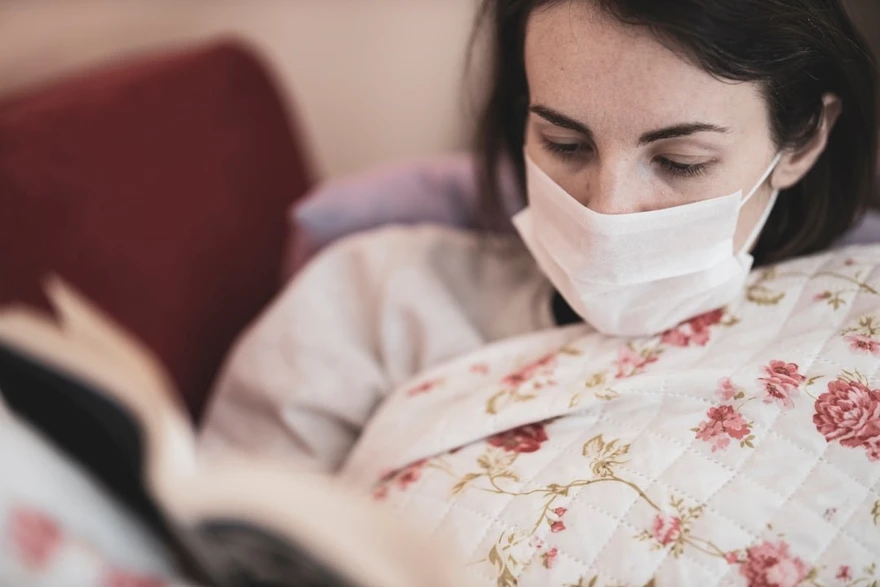


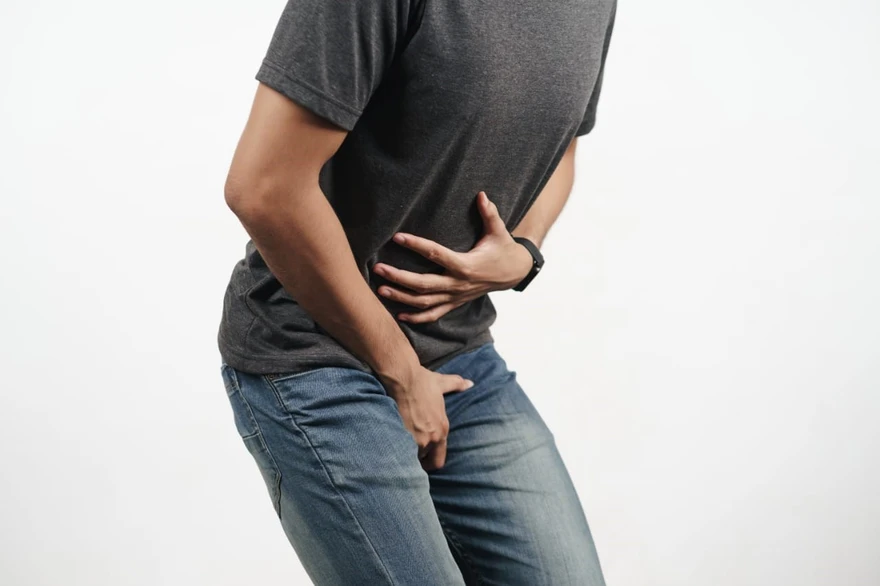

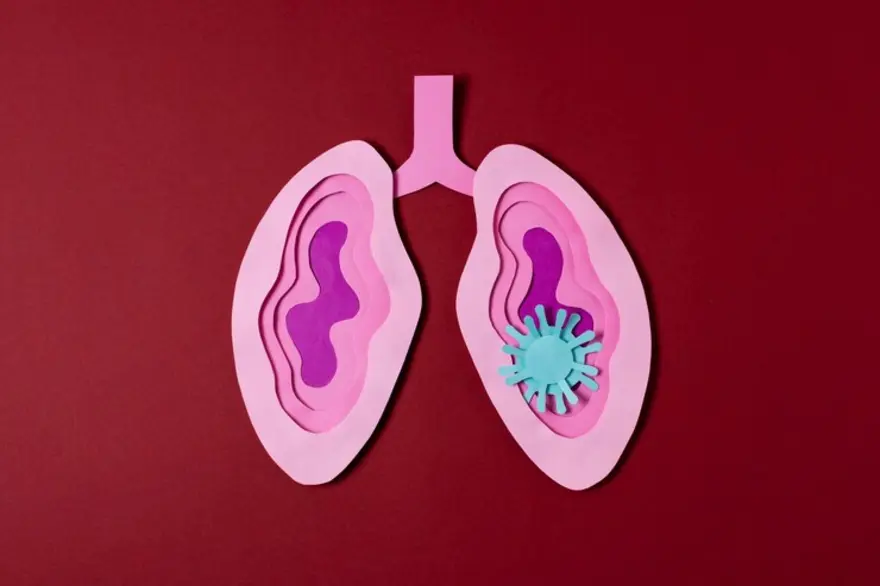
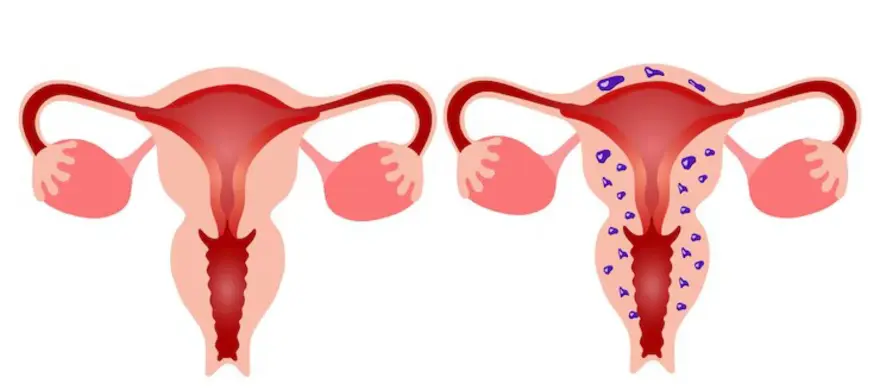
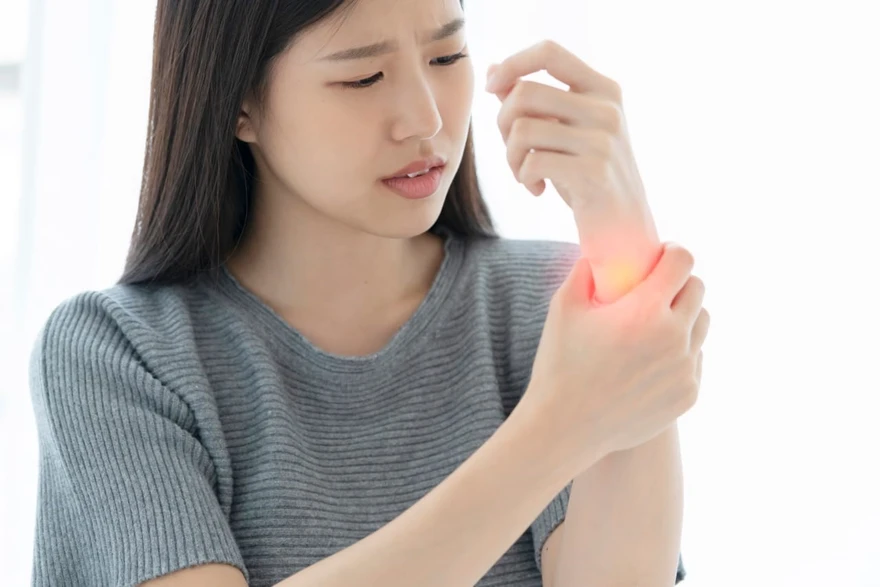









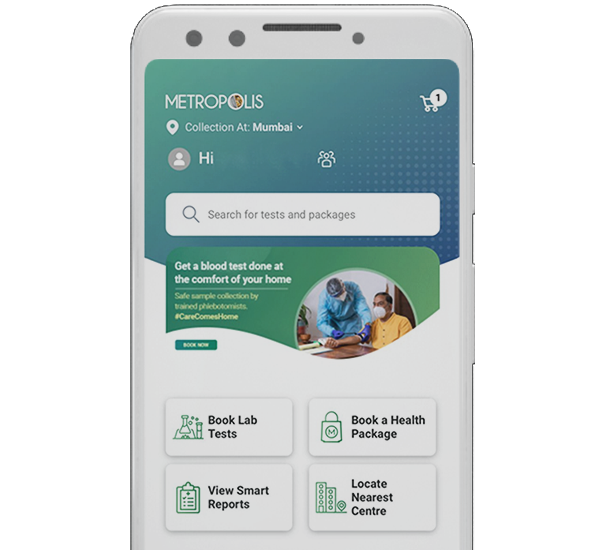
 WhatsApp
WhatsApp